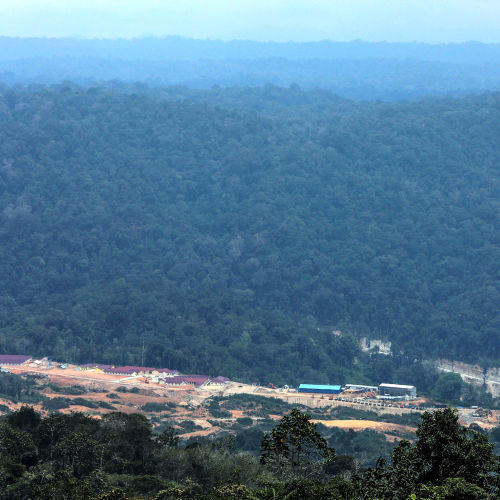The global infrastructure plan announced by G7 leaders aims to offer developing nations a credible alternative to China’s Belt and Road Initiative – but it faces major hurdles
(AF) US President Joe Biden has convinced the G7 to sign onto his global infrastructure initiative, drawing allies into Washington’s strategic rivalry with Beijing.
His plan, titled “Build Back Better World” (B3W), aims to provide hundreds of billions of dollars in infrastructure investment to developing nations.
It is a project that takes a page from China’s book, with Beijing already attempting to wield influence and make friends with billions of dollars through its Belt and Road Initiative, albeit sometimes without great success.
The Beijing plan “has under-delivered on many of its promises and generated pushback against China from many countries, creating an opening for the B3W initiative,” Eswar Prasad, a China specialist at Cornell University, said.
China launched the project in 2013, aiming to develop land and sea infrastructure that would link Asia, Europe and Africa to China. Eight years later, the complaints abound: allegations of non-transparency, corrupt contracts and even human rights and environmental degradation.
A hydropower plant constructed on the island of Sumatra in Indonesia, which has been widely criticized for damaging a rainforest that is home to the critically endangered Tapanuli orangutan, the world’s rarest great ape, has often been cited as an example.
“The risks for both the United States and recipient countries raised by BRI’s implementation considerably outweigh its benefits,” a task force from the Council on Foreign Relations (CFR), which has scrutinised hundreds of projects and their implications, said.
‘TRANSPARENT PARTNERSHIP’
The G7 project is touted by the White House as a “high-standard and transparent infrastructure partnership led by major democracies to help narrow the $40+ trillion infrastructure need in the developing world.”
G7 leaders hope to act as catalysts to attract private finance.
Scott Morris, a former senior US Treasury official and a senior fellow at the Center for Global Development who’s an expert on China’s Belt and Road, said: “Investing in our future productivity and providing public funding for research is good policy, whether we are doing so with an eye toward China or not.”
But offering an alternative to China is daunting. “More than anything, China’s Belt and Road is attractive to developing countries because of the scale of financing. The US studies the issues, advises other governments, and does everything but spend money on any sort of comparable scale to China.
“That’s not to say matching China dollar for dollar in the developing world is a good idea, particularly when many countries are laden with debt. But we should devote a level of ambition to match China’s international agenda.”
With reporting by Agence France-Presse
























